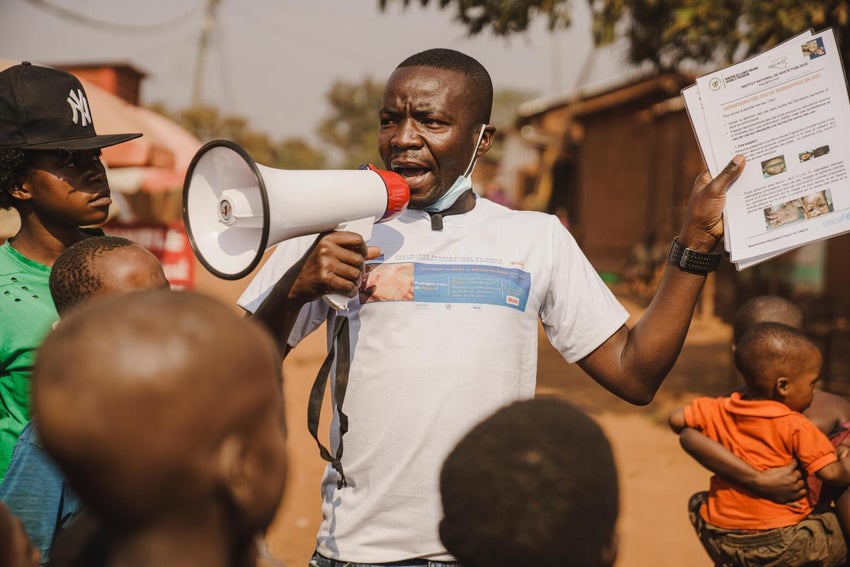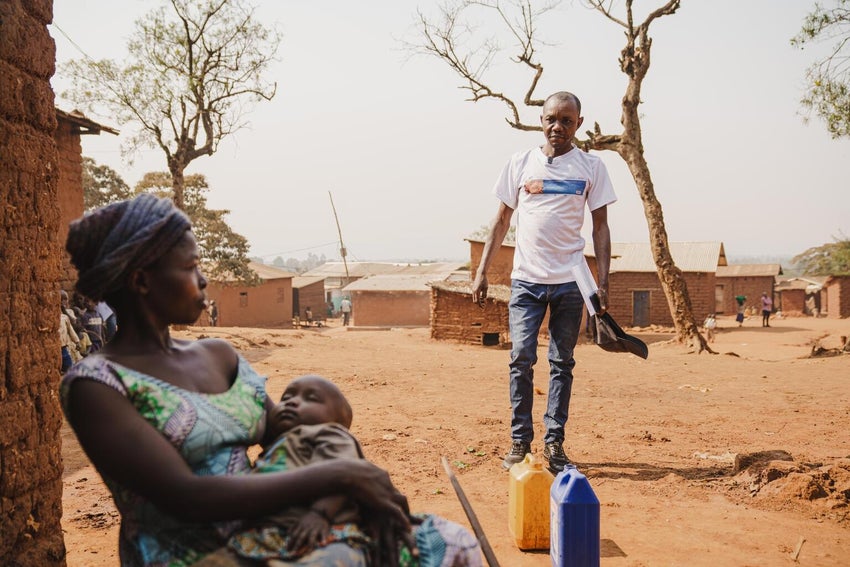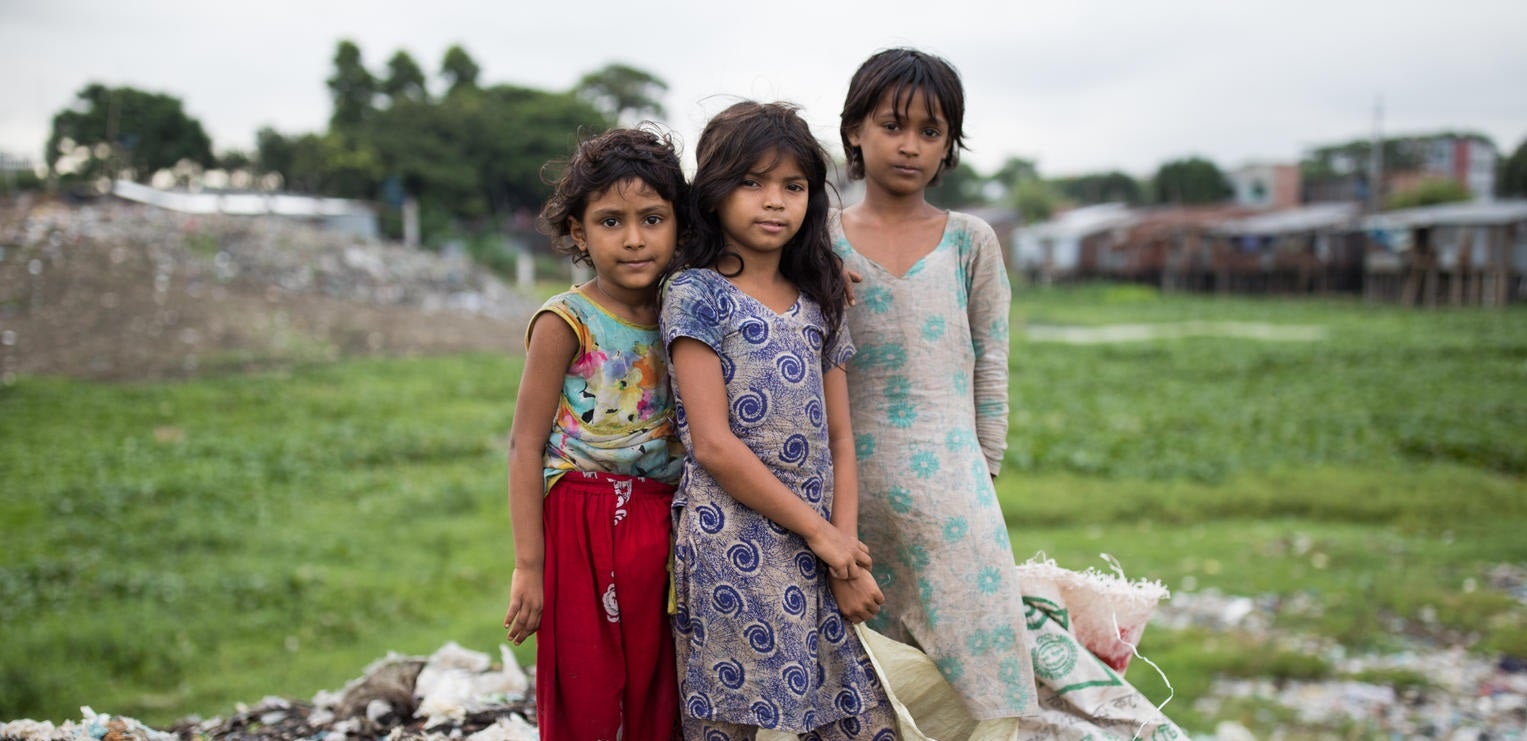On 14 August 2024, the World Health Organisation (WHO) declared a public health emergency of international concern (PHEIC) for mpox, which is rapidly spreading through Africa.
Mpox is a rare but highly contagious disease that makes people sick with flu-like symptoms such as fever, headache, and severe skin rashes.
According to the WHO, in 2024, the upsurge in mpox in the Democratic Republic of the Congo (DRC) and in a growing number of other African nations has led to about 550 suspected and confirmed deaths and more than 15,500 suspected and confirmed cases, and the numbers could be much higher.
We take a dive into what is mpox and the impact it can have on children.
"Children, especially those malnourished or affected by other illnesses, are the most vulnerable to catching and dying from this strain of mpox. Protecting them must be the top priority."

Latest statements from UNICEF
Concerns rise as mpox spreads to five African countries
Children and vulnerable communities are at the sharp end of an expanding outbreak of mpox in Eastern and Southern Africa. More than 200 confirmed cases have been detected across five countries (Burundi, Rwanda, Uganda, Kenya, South Africa), UNICEF reported today.

What is mpox?
Mpox is a viral disease that can cause flu-like symptoms and severe skin rashes that look like blisters. It became a serious human disease in 2022 when there was an outbreak across 75 countries. This was the first time a public health emergency was declared for mpox.
Health professionals managed to bring mpox back under control, however a new strain of the virus (called Clade 1b) started spreading rapidly in the Democratic Republic of the Congo (DRC) and into neighbouring countries.

What are the symptoms of mpox?
Mpox can cause flu-like symptoms, such as fevers, sore throats, headaches and body aches, swollen lymph nodes, as well as skin rashes that start on the face, palm of hands and feet and can then spread to other parts of the body.
The skin rashes first appear as flat sores, which develop into a blister filled with liquid and may be itchy or painful. The blisters fill with pus, scab over and fall off within two to four weeks. You can start to experience mpox symptoms three to 17 days after being exposed to the disease.
The latest outbreaks in Africa, caused by the Clade 1b strain of the virus, are serious. WHO estimates that Clad 1b kills 3.6 per cent of people it infects, which is much higher than other strains of mpox.

How does mpox spread?
Mpox is highly contagious, spreads through close, personal contact, and can spread to others one to four days before symptoms start to show.
Spreading through contact can happen in many ways, including direct skin-to-skin contact with the rash or scabs, sexual contact, saliva or bodily fluids. Pregnant mothers can pass on the mpox virus to the baby during pregnancy, or during or after birth.
Mpox can also be spread through contact with objects that haven’t been disinfected after use by someone with mpox; this includes bedding, clothing or towels.

Is there a vaccine for mpox?
Vaccines are being used to protect people against mpox and can be given before or after a person is exposed. Vaccines act as a shield, helping to protect people from life-threatening diseases.
According to the Australian Government Department of Health and Aged Care, if you are exposed to mpox, receiving a vaccination within four days after first exposure will provide the highest chance of avoiding the disease.

Why has mpox been declared a global public health emergency?
On 14 August 2024, the WHO declared a public health emergency of international concern (PHEIC) for mpox, the second time in two years. The rapid spread within Africa of the new strain, Clad 1b, has a higher fatality rate than other strains.
The mpox’s new status as a PHEIC should help accelerate research and vaccine availability and get much-needed funding to help contain the disease in Africa and around the world.

How does mpox affect children?
Just like adults, children with mpox develop flu-like symptoms and skin rashes. The skin rashes first appear as blisters on the face, palm of hands and feet and can then spread to other parts of the body.
With the Clade 1b strain, children may be at greater risk of severe mpox, as we are seeing higher fatality rates linked to mpox in children under 15 in DRC, which is the epicentre of the outbreak.
Children with mpox need to be closely monitored until they have recovered in case they need additional care.

Baby Aline recovery from mpox
When one-month-old Aline (name changed) was born, a family friend who was thought to be cured from mpox visited and held her.
“I saw a pimple on my daughter’s face, and I thought nothing of it at first, but as the days went by, the pimples grew in size and number,” says Aline’s mother. “When we arrived at the hospital, they told me we had to be admitted because the baby was suffering from mpox. My child had a high fever and was in a lot of pain. Too much for me to bear.”
Between April and July 2024, a hospital in the Democratic Republic of the Congo recorded 654 suspected cases of mpox, most of which were children under five years old.
UNICEF has provided the hospital with lifesaving medicines and a high-performing tent to help isolate mpox patients.
“We are overwhelmed, and we majorly lack resources. Unfortunately, we cannot keep all patients for treatment at the hospital. Recovering patients must undergo self-isolation at home, as it takes around 120 days to fully recover,” says Dr. Charles Masiva, Head of a UNICEF-supported hospital.
How can you prevent mpox?
Mpox is highly contagious; therefore, practising good hygiene and avoiding close contact with anyone who has been exposed to mpox is essential.
The Australian Government Department of Health and Aged Care advises people to take the following measures to help prevent infection:
- People who have mpox should isolate themselves from others until the sores are fully clear.
- Household members should avoid physical contact with the infected person. This includes any objects such as linen or towels that have been in contact with an infected person.
- Careful hand and respiratory hygiene are recommended for the infected person and everyone in the household. Wash hands with soap and water or use an alcohol-based hand sanitiser.
- If an infected person cannot isolate alone, they should wear a face mask around others. This includes when receiving medical care.

What’s UNICEF doing to support regions impacted by the mpox outbreak?
UNICEF is working in partnership with the WHO, Africa Centre for Disease Control and Prevention (CDC) and civil society organisations to prepare and implement a comprehensive response to the upsurge in mpox cases.
We’re focusing on children, pregnant women and underserved communities, prioritising the interruption of disease transmission and monitoring and addressing the secondary impacts on children and communities, such as child protection and school closures.
Here are just some of the ways UNICEF is responding to the needs of children, we’re:
- supporting national and provincial health authorities with coordination and in planning and implementing response strategies.
- engaging with communities, developing communication plans, training community health workers, and implementing mass communication campaigns.
- enhancing infection prevention and control at home, in the community, and in healthcare facilities by providing hygiene supplies and training healthcare workers.
- providing vital supplies, including medical kits, ensuring nutritional support for affected children, and exploring the use of new vaccines.
- addressing stigma and discrimination through plans for targeted mental health and psychosocial support interventions for children and caregivers.
- ensuring continued access to essential social services, particularly for children, pregnant women and underserved communities.
Help us keep children safe during emergencies
We’re working to protect children and help communities recover during times of emergency.



